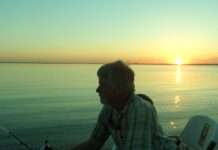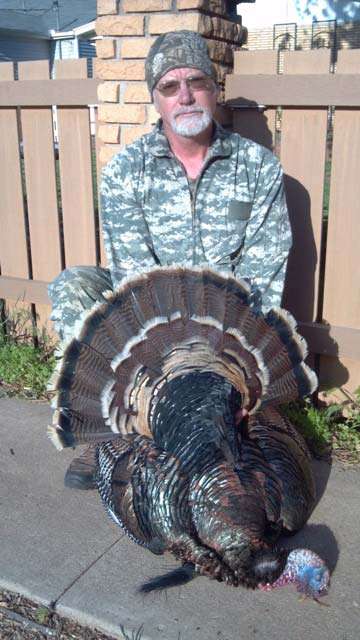The staccato chopping sounds of helicopter blades echoed across the gorges, drawing everyone’s eyes skyward as the little chopper appeared as a dot on the horizon. Anticipation ran high among the K State “deer crew” as the early morning light revealed the day’s first two Scott Co. Kansas deer suspended safely below the craft. Even though it was blasted cold and we were all bundled up like snowmen, the moment the deer were laid gently on the ground, the crew rushed forward with all the enthusiasm of the doctors and nurses on MASH as they ran up the hill to retrieve their patients from the choppers.
The three year western KS deer research project I wrote about last winter has just entered its second year and the task at hand last weekend was capturing and tagging additional deer for the study. As their headquarters for the day, Kansas State Professor of Wildlife and Outdoor Enterprise Management Drew Rickets and his student crew had chosen this high open knoll in a rolling desolate pasture northeast of Scott City surrounded by deep, winding, brushy draws. A sizeable tent was erected to hold examination tables and equipment. This year the goal was to capture, tag and collar an additional 30 does near Scott City and an additional 30 farther north near Lenora, KS. Only enough bucks will be collared at each site to replace bucks lost last year through harvesting, motor vehicle accidents or natural causes. The deer selected for capture will be divided evenly between whitetails and mule deer.
Three guys make up the helicopter crew, the pilot, a “gunner” and a “mugger.” The pilot cruises the draws and hillsides and when a deer is sighted, he puts the chopper over the deer so the gunner can shoot a large net that encompasses the animal and puts it safely on the ground. The helicopter lands and drops off the mugger to prepare the deer for transport while the pilot and gunner take to the air again in search of another. The deer is given a mild sedative and all four legs are tied together with a leather belt, then it gets a blindfold and is rolled out of the net into a heavy canvass transport bag. After the gunner nets a second deer, he is dropped off to prepare that one while the chopper picks up the mugger and the first deer. Finally, the gunner and second deer are picked up and both deer are flown back to the tent. Captured bucks are given a GPS tracking collar by the helicopter crew and released where they are captured.
Does taken to the tent site are rolled onto wooden stretchers, weighed and laid on a table in the tent. Again, with all the eagerness of Trapper, BJ and Hotlips on MASH, the crew sets to work. While a couple students gently hold the deer on its side, a veterinarian gives her a sonogram to determine if she’s pregnant, she’s given an ear tag and a GPS collar, various measurements of her body are recorded, and if she’s pregnant a vaginal transmitter is implanted that will begin transmitting when she enters labor so the fawn can be found, collared and tracked also. Finally, a paint mark is put on her back so she’s not recaptured by the chopper crew, and she’s released outside.
The study began as a means to help KS Dept of Wildlife, Parks and Tourism biologists understand why mule deer are steadily regressing westward and being replaced by whitetails. Joyce and I spent a couple days at Scott City last May helping the group track and find fawns, and I was honored to be allowed to participate in this part of the project as well, as the exuberance and attention to detail by these college students running the study is infectious to say the least. The only thing lacking from my experience was a chance to ride in the chopper as the pilot threaded his way through the brushy canyons like Luke Skywalker in Star Wars!…Continue to Explore Kansas Outdoors.
Steve can be contacted by email at [email protected].




